Disclosure: We may earn commissions if you purchase products after clicking on a link from our site.
Do you want to try your hand with channel catfish? Do you want to learn how to catch channel catfish? Do you see pictures of these very large channel catfish and want to experience the thrill of catching them? Channel catfish are abundant and thrive in almost every body of water. They are hard fighters and taste good on the table.
In this article, we will discuss how to catch channel catfish, share the best fishing methods, the baits, lures, fishing tackle, and fishing tips to cut the learning curve.
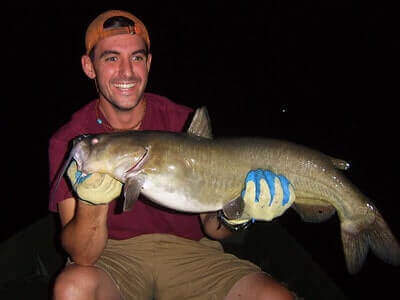
Table of Contents
- 1 How To Catch Channel Catfish
- 2 Best Baits For Channel Catfish
- 3 Best Lures For Channel Catfish
- 4 Channel Catfish Fishing Tackle
- 5 How To Catch Channel Catfish From Shore
- 6 How To Catch Channel Catfish In A River
- 7 How To Catch Channel Catfish In A Pond
- 8 How To Catch Channel Catfish In The Winter
- 9 How To Catch Channel Catfish In Summer
- 10 Channel Catfish Fishing Tips
- 11 The Bottom Line
How To Catch Channel Catfish
1. Baitcasting
Baitcasting is a versatile and effective fishing method for catching channel catfish, providing anglers with the precision and control needed to target these prized freshwater gamefish. To catch channel catfish using baitcasting gear, anglers typically use a baitcasting rod and reel setup paired with heavy line and sturdy tackle to handle the strength and size of catfish.
The key to success with baitcasting for channel catfish lies in selecting the right bait and presenting it effectively. Anglers often use a variety of natural bait such as chicken liver, cut bait, or stink bait, which are rigged on a baitcasting rig with a sinker to keep the bait near the bottom where catfish often forage.
Anglers should cast their baited rig into areas with submerged structures, such as fallen trees, rock piles, or deep holes, where channel catfish are likely to be holding. By maintaining control over the casting distance and accuracy, anglers can effectively place their bait in prime catfish territory and increase their chances of success. Baitcasting for channel catfish requires patience, technique, and attention to detail, but with practice, anglers can enjoy consistent success in targeting these prized freshwater gamefish.
2. Trolling
Trolling is a popular and effective fishing method for catching channel catfish, particularly in larger bodies of water such as lakes or reservoirs. Anglers utilize trolling motors or boat propulsion to slowly move their boat through the water while trailing lines rigged with bait or lures behind them.
To catch channel catfish using trolling, anglers should first select appropriate bait or lures such as crankbaits, swimbaits, or spinner rigs, ensuring they mimic the natural prey of channel catfish. Anglers can then adjust the speed of their boat to control the depth at which their bait or lures are presented, targeting specific areas where channel catfish are likely to be holding, such as along drop-offs, submerged structures, or underwater channels.
By covering a large area of water and varying their trolling speed and depth, anglers can effectively locate and entice strikes from channel catfish. Successful trolling for channel catfish requires patience, experimentation, and the ability to adapt to changing conditions, but with practice, anglers can enjoy consistent success using this versatile fishing method.
3. Drift Fishing
Drift fishing is a highly effective fishing method for targeting channel catfish, particularly in rivers or large bodies of water with moderate current flow. Anglers employ this technique by allowing their boat to drift naturally with the current while trailing lines baited with natural baits such as cut bait, chicken liver, or stink bait.
To catch channel catfish using drift fishing, anglers should first identify areas with promising features such as submerged structures, drop-offs, or eddies where catfish are likely to congregate. Once in position, anglers can cast their baited lines out behind the boat and allow them to drift along the bottom, covering a wide area and increasing their chances of encountering actively feeding catfish.
Anglers can adjust the depth of their bait presentation by varying the weight of their sinkers or by using a drift sock to control the speed and direction of their drift. By remaining attentive to their rods and regularly checking for bites, anglers can effectively catch channel catfish using the drift fishing technique.
Successful drift fishing for channel catfish requires patience, persistence, and a keen understanding of the water conditions and fish behavior, but with practice, anglers can enjoy consistent success using this versatile and productive fishing method.
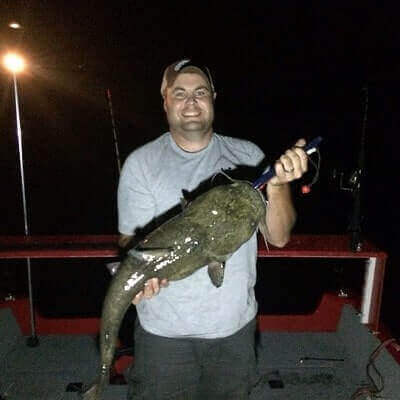
4. Still Fishing
Still fishing, also known as anchoring or bottom fishing, is a straightforward yet effective method for catching channel catfish, particularly in lakes, ponds, or slow-moving rivers. Anglers employ this technique by anchoring their boat or securing themselves to the shoreline and casting out lines baited with natural baits such as chicken liver, cut bait, or stink bait.
To catch channel catfish using still fishing, anglers should first identify promising areas with features such as submerged structures, drop-offs, or weed beds where catfish are likely to congregate. Once in position, anglers can cast their baited lines out into the water and allow them to settle on the bottom, where channel catfish often forage for food.
Anglers can adjust the depth of their bait presentation by varying the weight of their sinkers or by using a slip bobber to suspend their bait at a desired depth. By remaining patient and attentive to their rods, anglers can detect subtle bites and effectively catch channel catfish using the still fishing technique.
Successful still fishing for channel catfish requires careful bait selection, proper presentation, and a willingness to adapt to changing conditions, but with practice, anglers can enjoy consistent success using this reliable and accessible fishing method.
5. Bottom Fishing
Bottom fishing is one of the most common and effective methods for catching channel catfish. Anglers typically use a variety of bait such as chicken liver, cut bait, or stink bait rigged on a bottom rig or slip sinker setup.
The key to success with bottom fishing for channel catfish is to present the bait near the bottom of the water column, where catfish often forage for food. Anglers can target areas with submerged structures, such as fallen trees, rock piles, or deep holes, where channel catfish are likely to be holding.
By allowing the bait to settle on the bottom and periodically checking for bites, anglers can effectively catch channel catfish using this method. For more information on bottom fishing techniques for channel catfish, anglers can visit the official website of the United States Fish and Wildlife Service at https://www.fws.gov/.
6. Jug Fishing
Jug fishing is a passive and efficient method for catching channel catfish, particularly in larger bodies of water such as lakes or reservoirs. Anglers use floating jugs or buoys rigged with baited lines to target channel catfish in areas with moderate current flow or wind drift.
The baited lines are typically rigged with a variety of baits such as live or cut bait, and the jugs are set adrift in the water, allowing them to passively drift with the current or wind. When a channel catfish takes the bait, the jug will bob or move, indicating a strike. Anglers can then retrieve the jug and reel in the fish. Jug fishing can be an effective way to cover a large area of water and locate actively feeding channel catfish.
7. Trotlining
Trotlining is a traditional and effective method for catching channel catfish, particularly in rivers or streams with moderate current flow. Anglers set up a mainline or trotline across the width of the waterway, anchored at each end and suspended above the bottom using floats or buoys.
Multiple baited hooks are attached to the trotline at regular intervals, each rigged with a variety of baits such as cut bait, chicken liver, or stink bait. The trotline is then set in the water and allowed to drift or remain stationary, depending on the current and fishing conditions.
When a channel catfish takes the bait, the angler can detect the bite by observing movement or tension on the mainline. Trotlining allows anglers to passively fish multiple baits simultaneously, increasing their chances of catching channel catfish.
Best Baits For Channel Catfish
- Nightcrawlers
Nightcrawlers are a highly effective and versatile bait for catching channel catfish, offering anglers a natural and enticing option to entice strikes from these prized freshwater gamefish. To use nightcrawlers as bait for catching channel catfish, anglers typically rig them on a hook or jighead and present them near the bottom of the water column, where catfish often forage for food.
Nightcrawlers emit natural scents and vibrations that can attract catfish from a distance, making them particularly effective in low-light conditions or when fishing in murky waters. Anglers can target areas with submerged structures, such as fallen trees, rock piles, or deep holes, where channel catfish are likely to be holding.
By allowing the nightcrawler to wiggle and move naturally in the water, anglers can increase their chances of enticing strikes from nearby catfish. Nightcrawlers are readily available at bait shops or can be collected by anglers themselves, making them a convenient and accessible bait option for targeting channel catfish. Overall, nightcrawlers are a reliable and productive bait choice for anglers seeking to catch channel catfish in a variety of freshwater environments.
2. Leeches
Leeches are a natural and effective bait option for catching channel catfish, providing anglers with a versatile and enticing option to attract strikes from these freshwater gamefish. To use leeches as bait for catching channel catfish, anglers typically rig them on a hook or jighead and present them near the bottom of the water column, where catfish often forage for food.
Leeches emit natural scents and movements that can attract catfish from a distance, making them particularly effective in low-light conditions or when fishing in murky waters. Anglers can target areas with submerged structures, such as fallen trees, rock piles, or deep holes, where channel catfish are likely to be holding.
By allowing the leech to wiggle and move naturally in the water, anglers can increase their chances of enticing strikes from nearby catfish. Leeches are readily available at bait shops or can be collected by anglers themselves, making them a convenient and accessible bait option for targeting channel catfish. Overall, leeches are a reliable and productive bait choice for anglers seeking to catch channel catfish in a variety of freshwater environments.
3. Grasshoppers
Grasshoppers can serve as an unconventional yet effective bait for catching channel catfish, providing anglers with a natural and enticing option to attract strikes from these freshwater gamefish. To use grasshoppers as bait for catching channel catfish, anglers typically rig them on a hook or jighead and present them near the bottom of the water column, where catfish often forage for food.
Grasshoppers emit natural scents and movements that can attract catfish from a distance, making them particularly effective in low-light conditions or when fishing in clear waters. Anglers can target areas with submerged structures, such as fallen trees, rock piles, or deep holes, where channel catfish are likely to be holding.
By allowing the grasshopper to hop and flutter naturally in the water, anglers can increase their chances of enticing strikes from nearby catfish. Grasshoppers can be collected by anglers themselves in grassy areas or purchased at bait shops, making them a convenient and accessible bait option for targeting channel catfish. Overall, grasshoppers offer anglers a unique and productive bait choice for catching channel catfish in a variety of freshwater environments.
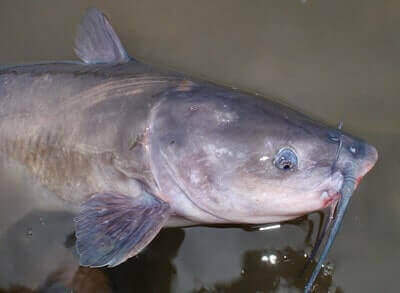
4. Minnows
Minnows are a popular and effective bait choice for catching channel catfish, offering anglers a versatile and natural option to entice strikes from these prized freshwater gamefish. To use minnows as bait for catching channel catfish, anglers typically rig them on a hook or jighead and present them near the bottom of the water column, where catfish often forage for food.
Minnows emit natural scents and movements that can attract catfish from a distance, making them particularly effective in low-light conditions or when fishing in murky waters. Anglers can target areas with submerged structures, such as fallen trees, rock piles, or deep holes, where channel catfish are likely to be holding.
By allowing the minnow to swim and move naturally in the water, anglers can increase their chances of enticing strikes from nearby catfish. Minnows can be purchased at bait shops or caught by anglers themselves using a minnow trap or seine net, making them a convenient and accessible bait option for targeting channel catfish. Overall, minnows provide anglers with a reliable and productive bait choice for catching channel catfish in a variety of freshwater environments.
5. Sunfish
Sunfish, also known as bluegills or pumpkinseeds, can be an effective bait option for catching channel catfish. These small fish are natural prey for channel catfish and can attract strikes when presented properly. To use sunfish as bait for catching channel catfish, anglers typically rig them on a hook or jighead and present them near the bottom of the water column, where catfish often forage for food.
Sunfish emit natural scents and movements that can entice catfish from a distance, making them particularly effective when used live. Anglers can target areas with submerged structures, such as fallen trees, rock piles, or deep holes, where channel catfish are likely to be holding.
By allowing the sunfish to swim and move naturally in the water, anglers can increase their chances of enticing strikes from nearby catfish. Sunfish can be caught using various methods, including baited hooks, cast nets, or traps, making them a convenient and accessible bait option for targeting channel catfish. Overall, sunfish provide anglers with a natural and productive bait choice for catching channel catfish in a variety of freshwater environments.
6. Bluegill
Bluegill, a common freshwater fish found in many bodies of water, can also serve as effective bait for catching channel catfish. These smaller fish are a natural part of the channel catfish’s diet, making them an enticing option for anglers seeking to lure in these gamefish. To use bluegill as bait for catching channel catfish, anglers often rig them on a hook or jighead and present them near the bottom of the water column, where catfish tend to forage.
Bluegill emit natural scents and movements that can attract catfish from a distance, especially when used alive. Anglers typically target areas with submerged structures, such as fallen trees, rock piles, or deep holes, where channel catfish are likely to hide. By allowing the bluegill to swim and behave naturally in the water, anglers can increase their chances of enticing strikes from nearby catfish.
Bluegill can be caught using various methods, including baited hooks, cast nets, or traps, making them a convenient and accessible bait option for targeting channel catfish. Overall, bluegill provides anglers with a natural and effective bait choice for catching channel catfish in a variety of freshwater environments.
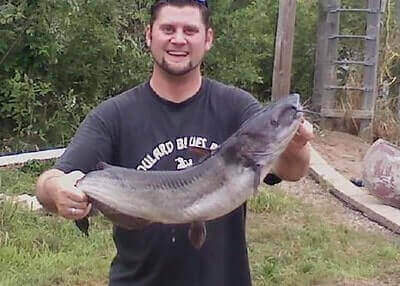
Best Lures For Channel Catfish
- Jigs
Jigs are versatile and effective lures for catching channel catfish, offering anglers a reliable option to entice strikes from these prized freshwater gamefish. Jigs typically consist of a weighted head with a hook and a soft plastic or feather body, mimicking natural prey such as baitfish or aquatic insects.
To use jigs as lures for catching channel catfish, anglers can cast them out and retrieve them with a variety of techniques, including slow, steady retrieves, or bouncing them along the bottom to imitate wounded prey. Anglers can target areas with submerged structures, such as fallen trees, rock piles, or deep holes, where channel catfish are likely to be holding.
By experimenting with different jig sizes, colors, and retrieval speeds, anglers can effectively entice strikes from channel catfish in a variety of fishing conditions. Jigs are readily available at tackle shops and can be used in combination with other bait options to increase their effectiveness. Overall, jigs provide anglers with a versatile and productive lure choice for catching channel catfish in a variety of freshwater environments.
2. Diving Plugs
Diving plugs are an excellent option for anglers targeting channel catfish, providing a versatile and effective lure choice to entice strikes from these freshwater gamefish. These lures typically feature a diving lip or bill that causes them to dive beneath the water’s surface when retrieved, mimicking the movements of injured or fleeing baitfish.
To use diving plugs for catching channel catfish, anglers can cast them out and retrieve them at various speeds and depths to cover a wide range of water columns. Anglers can target areas with submerged structures, such as fallen trees, rock piles, or deep holes, where channel catfish are likely to be holding.
By varying the retrieval speed and depth, anglers can effectively trigger strikes from channel catfish in a variety of fishing conditions. Diving plugs are available in a range of sizes, colors, and diving depths, allowing anglers to tailor their lure selection to match the preferences of the fish and the conditions of the water. Overall, diving plugs offer anglers a versatile and productive lure option for targeting channel catfish in a variety of freshwater environments.
Channel Catfish Fishing Tackle
The fishing tackle for channel catfish is not a high-tech setup. You can use the tackle that you use when fishing for many other species of fish like bass, salmon, or trout. A medium-heavy rod and reel combo will get the job done when fishing for channel catfish.
A spinning tackle and reel can also be used. Circle hooks are the best choice. Braided as well as mono lines can be used. It is a matter of preference. But I prefer braided lines with 200 yards or more of 30 lb or 40 lb test.
How To Catch Channel Catfish From Shore
When fishing for channel catfish from the shore, anglers usually cast in areas where bluegill or other baitfish that channel catfish prey on. It is usually about 10 feet or less from the banks. Look for areas with deep holes, points, and coves to cast your bait.
Even though you are fishing from the shore, you can still catch catfish from those areas. If you have a long rod, 7 ft or more, you can cast further into the body of water for the bait to go deeper into the water columns and target catfish that are closer to the bottom.

How To Catch Channel Catfish In A River
When fishing for channel fish in a river, use your fish finder or sonar device to locate structures that the catfish may be hanging around waiting for baitfish. Use cut baits, live baits, or smelly baits to catch channel catfish. Trolling, still fishing, drift fishing, and bottom fishing are methods anglers use to catch channel catfish.
How To Catch Channel Catfish In A Pond
When fishing for channel catfish in a pond, cast your bait so that it is closer to the bottom. You can use cut bait, live bait, or smelly baits to get the attention of catfish. Look for structures that catfish may be using as cover to ambush prey.
Drift fishing, still fishing, baitcasting, bottom fishing, and trolling are fishing methods implemented by anglers when fishing for channel catfish in a pond.
How To Catch Channel Catfish In The Winter
Channel catfish will move to deeper water as the water temperature starts to drop. When targeting channel catfish during the winter, cast cut bait or nightcrawlers closer to the bottom. Bottom fishing is the most practical fishing method that is used during the winter when targeting channel catfish. Drift fishing and bottom bouncing are also used during the winter to catch channel catfish.
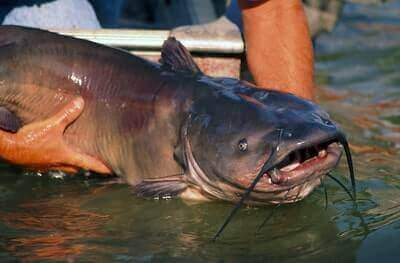
How To Catch Channel Catfish In Summer
During summer, channel catfish will spawn. Look for rock structures with cavities that can possibly be nesting areas. Using a bobber, drop minnows, nightcrawlers, or leeches in those areas to target channel catfish. Baitcasting, drift fishing, still fishing, trolling, and night fishing are fishing methods that are used to catch channel catfish during the summer.
Channel Catfish Fishing Tips
- Channel catfish swim in groups. When you find one, there will be others in the area.
2. Channel catfish is a hard fighter and will wrestle with you when caught. Your best bet is to let it tire itself and then reel it in. Use the backbone of the rod to get it tired.
3. Channel catfish spawn in the summer.
4. As the water temperature rises in the summer, channel catfish become active, searching for food to build up energy reserves before the spawning period. this is a great opportunity for anglers to target channel catfish.
5. Look for shallow areas that are close to deep drop-offs. You will always find channel catfish in these areas.
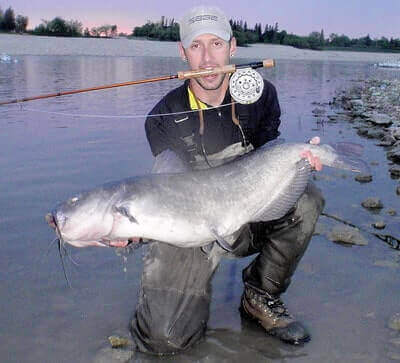
6. Fresh-cut bait and live bait are some of the best bait to use when you are learning how to catch channel catfish.
7. Always try to match the hatch when you are fishing for channel catfish. Find out from other anglers or the local tackle shop what is the diet of channel catfish in the area and buy the bait or get it fresh.
8. When fishing from the banks of a lake, you really don’t need to use weights. The bait will get down to the bottom. If you do use weights, use as little weight as possible.
9. When you are learning how to catch channel catfish, look for areas with a lot of baitfish or marine life. Move from one area to another if you are not getting any action in one area.
10. When fishing for channel catfish, also look for areas where the wind is blowing into you. If the wind is blowing into your face, then the wind is also washing baitfish and other aquatic life in that direction. This means channel catfish will also be hunting that area for prey.

11. Shallow water covers will almost always have channel catfish lurking there waiting for baitfish.
12. Circle hooks are the popular choice of hooks when fishing for channel catfish.
13. Hook sizes ranging from 1/0 to 5/0 will work when fishing for channel catfish while 5/0 to 8/0 will get the job done for monster channel catfish.
14. Never reel while a channel catfish is pulling the drag. When faced with this situation, just work the backbone of the rod to wear the catfish. When it is exhausted, you can then reel it in.
15. Cast and put the fishing rod in the holder. Only take the rod when its tip is touching the water. The fishing rod will set the circle hook as the catfish swim away. Then all you need to do is reel it in.

16. Drift fishing, still fishing, trolling, and baitcasting are some of the fishing methods anglers use when fishing for channel catfish.
17. Whether you are fishing in a lake, a river, or a pond, concentrating your fishing at the bottom will be the best option for channel catfish.
18. Channel catfish have a good sense of smell and smelly dead baits and cut baits work well when fishing for channel catfish.
19. Channel catfish are caught most of the time with baits, whether dead or alive, cut or whole. Lures are not the best option for catching channel catfish.
20. Use a live worm or minnow at the tip of a jig when you use a jig to catch channel catfish.
21. If you are close to a dam, you can target channel catfish in tailwaters where they wait for chunks of baitfish that have been cut up by the turbines.

22. The junction of channels, deep holes, bends, and curves are areas to target when fishing for channel catfish.
23. When fishing from a lake, look for ledges, humps, or shoals where there is a big drop in deep water. Channel catfish will be in there waiting for baitfish.
24. Night fishing for channel catfish can yield more results than fishing during the day.
The Bottom Line
Channel catfish is a sporting fish that anglers like to target as they are almost everywhere, fight ferociously, and have a good table fare. They respond well to fresh and cut bait but will also take dead bait.
In this article, we shared information on how to catch channel catfish to improve your chances when you go channel catfish fishing. You can also read how to catch blue catfish, how to catch flathead catfish, how to catch white catfish, and catfishing tips.
